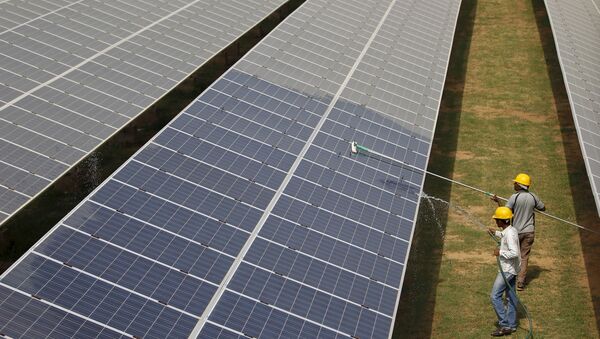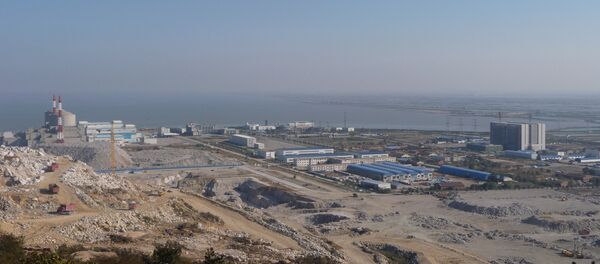The most astonishing part is that the construction was done in record eight months time- a critical factor for countries like India where a large section of the population has no access to electricity. Moreover, the project involved an investment of $ 679 million, a small fraction of what a coal-fuelled or nuclear power plant of similar capacity would cost in India. The title of world's largest solar power plant was earlier held by the Topaz Solar Farm in California, US.
AMAZING! India Unveils The World's Largest #Solar Power Plant: 648 MW In Kamuthi https://t.co/owfSZ2rl5E #climatechange #24HoursofReality pic.twitter.com/1IAGHhNacj
— Jim Harris (@JimHarris) 6 декабря 2016 г.
Located at Kamuthi in the southern state of Tamil Nadu, the panel comprising 2.5 million solar components, was set up by nearly 8,500 people. Its power generation capacity is enough to light up to 150,000 Indian homes. The plant also incorporates a robotic system that uses fine micro-fibres to wipe dust, dirt, pollen and other contaminants from the panels on a regular basis.
With the operation of this mega plant, India has now leap-frogged the UK to become the world's third nation in the deployment of utility-scale solar panels. Moreover, India still has a huge backlog of awarded tenders, which should enable it to close the gap with the leaders, the US and China, in the coming years, according to an estimate.
"Only solar energy can fulfill the energy requirements of the country as all other sources have limited production. Given most parts of India receive high solar radiation, in the range of 5-7kW/m2/day, even our house rooftops are enough to produce power that we need to light our house the entire day," said Chetan Singh Solanki, Professor at the prestigious Indian Institute of Technology, Bombay, and chairman of kwatt Solutions Private Limited (KSPL). Solanki made the comments at a recent seminar 'Emerging solar PV technology applications for academics' organized by Mangalore University.
Earlier this year, the Narendra Modi led government announced plans to increased the country's solar power target to 100,000 MW by 2022. The decision was prompted by the 2016 Energy Outlook Report that hauled up India for its reliance on fossil fuels. The report says that by 2035, India's oil imports will be up by 169 percent, coal imports by 85 percent and gas imports by 573 percent.
Nevertheless, the pace of activity in the renewable energy sector, especially solar, has picked up tremendously in the last two years because of strong government support and increasing price competitiveness. Proposed tariffs for solar energy start as low as Rs 3 ($0.04) per unit. The lowest tariff has been offered in the states of Uttarakhand, Himachal Pradesh and Puducherry by Amplus Energy Solutions Pvt. Ltd, which in June this year, acquired a US solar power developer's roof-top solar power assets in India.




